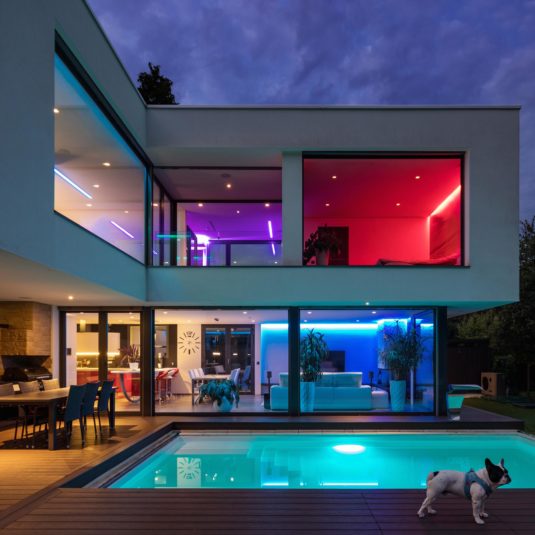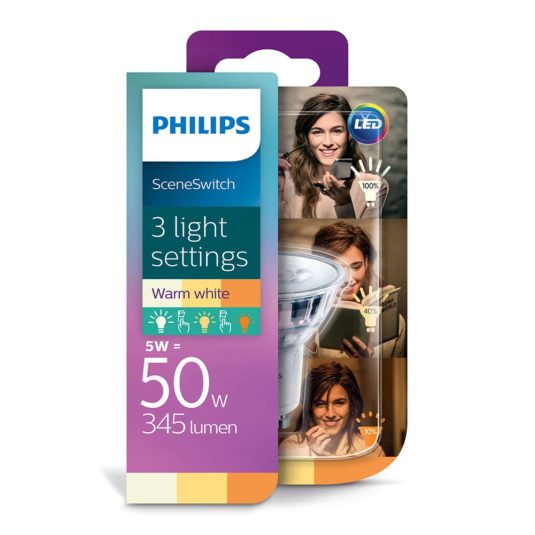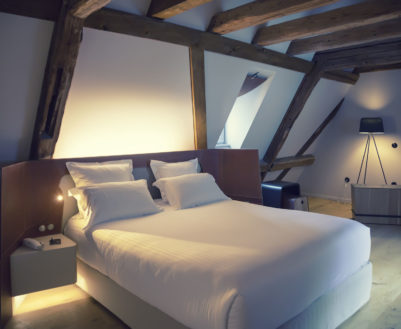How to choose LED Lighting for your home


It’s Not Just About Wattage
Choosing LED lighting to replace old filament and halogen bulbs in your home is easy if you follow some simple steps. It’s true that the old days of buying a bulb based on the wattage, with higher watts delivering more brightness, meant that choice was not complicated. But now, with LED, you have to move away from just looking at the wattage.
Two Key Measurements
There are two key measurements that help you decide what LED bulb to buy: lumens and kelvins. The lumens indicate how bright the bulb will be and the kelvins will give you a clear idea of the warmth or colour.
Lower kelvin figures indicate more warmth, moving up the scale to what some would term a colder or harsher (bluer) light at the top end. The lumens specify the amount of light emitted.
You will also see, when you search for LED bulbs, that manufacturers give you the wattage and this is useful for understanding how much power will be consumed. It’s no help at all in indicating warmth, colour or brightness.
Three Figures
By taking the three figures – lumens, kelvins and wattage – together, you have the right information to make the best choice for different areas in your home, and maximising the energy savings while selecting the highest quality.
The exact type of light is very much a personal preference but by using these measures, you should be able to make the best choices in all your living spaces and ensure you also enjoy the best energy savings.


What to Look For
So, on the packaging or product details, look for the
- lumens (lm)
- wattage (W)
- kelvins (K)
You can decide what brightness colour/warmth you want to have and then select the bulb with the specifications to deliver that, along with the more efficient power use.
As a general guide, lower kelvin bulbs give you warm white colour, while medium K bulbs deliver neutral whites, and higher K bulbs are close to daylight quality. For example, to replace a 60-watt filament bulb, you could select an LED with a lumen rating of 800, kelvin of 3000 and 8-12 watts. In the spirit of making things easy for people to understand, the front of bulb packaging will often show something like ‘warm white’ or ‘cool white’ instead of the kelvin number.
Room by Room
Let’s look at each area of the home to map out some top LED lighting choices. There is a wide range of options available from classic shape LED bulbs to LED strip lights and vintage-effect LED bulbs, that also give you more control over design and aesthetics.
Living Room
This is an area that really demands a mix of warm and targeted lighting to help you relax with family and friends, watch TV series, films and sport, read and listen to music and so on. For that, the ideal balance would be for a range of bulbs with the warmth of 2200 to 3000 K, and right brightness of 400-900 lm for each light. Higher lm might be chosen if used with dimmer.
Kitchen
The kitchen is a busy area and used at different times throughout the day so a dimming function would be handy to allow for bluer light in the mornings, focused on work areas to keep you alert and a warmer colour option for balance. A balance of downlights (often GU10s) and strip lighting for accent and highlights would work well. The range of bulbs could be 3000-4000 K and 400-1300 lm.


Bedroom
You might be replacing an old main filament bulb of 100 watts and side lights of 40 watts. For this, a combination of warm and neutral light is ideal, 400+ to 1300 lm and 2700-4000 K. Keeping the colour range away from the harsher blue light also helps you to relax.
Dining Room
This is another area where a range of subtle and targeted lighting helps to provide the right ambience for eating with family and friends. Dimmable LEDs that provide warm and neutral light work very well in the range 400+ to 1300 lm and 2700-4000 K. If a chandelier fixture is part of the mix, there are excellent chandelier bulbs with beautiful light and colour.
Bathroom
Ideally, the bathroom will be clearly lit with a focus on the mirror and shower area with strip lighting an option but whatever your preferred set-up, it important to have light that is not too harsh so LED bulbs of 4000 K and 900+ lm work well.
Home office
This is an area where cool white LED works very well, for alertness and focus. There could be a combination of overhead and task-based, targeted lighting with desk lamps and a range of 400+ to 1300 lm and 3000-4500 K (higher if preferred).
Hallway and stairs
This is another area well suited to flexible lighting, with dimming options. The warm and welcoming light that makes a lasting impression can be balanced with brighter illumination when needed. Fixtures and fittings vary greatly but strip lighting is an excellent option, along with the main fitted lamps. The overall range of LED lighting would be from 400+ to 1300 lm and 2700-4000 K.
Loft
Reliable and bright LED lighting is crucial in the loft and it may be that LED strip lighting together with a single main bulb would work well – 1300 lm and 4500+ K.
Outdoor/garden
From solar LED lighting to PIR lamps, there is a huge variety of choices for the garden. For outdoor security and safety, a bright PIR light source is essential with 700-1500 lm range and 3000k-4000 K.